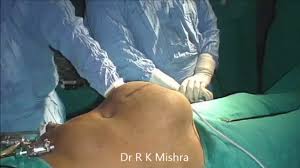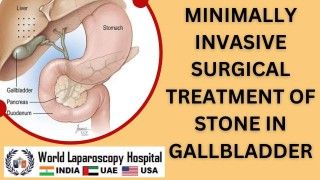Endometrioma Surgery by Laparoscopy
Add to
Share
225 views
Report
2 months ago
Description
Endometriomas, commonly referred to as “chocolate cysts,” are ovarian cysts caused by endometriosis. They contain old, dark blood and are often associated with pelvic pain, painful periods, infertility, and sometimes recurrent cyst formation. With advancements in minimally invasive gynecological surgery, laparoscopic management has become the gold standard for the treatment of endometriomas. What is Endometrioma? An endometrioma is a type of ovarian cyst formed when endometrial tissue, which normally lines the uterus, grows within the ovary. Over time, this tissue bleeds and collects, leading to the characteristic brown-colored cyst. Endometriomas can cause significant symptoms and adversely affect ovarian reserve and fertility. Why Laparoscopy for Endometrioma? Laparoscopic surgery is the preferred approach for treating endometriomas because it is minimally invasive and offers several benefits over traditional open surgery, such as: Smaller incisions and less scarring Faster recovery and shorter hospital stay Reduced postoperative pain Better cosmetic results Enhanced visualization of pelvic structures for precise surgery Laparoscopic Techniques for Endometrioma Surgery Several techniques are used depending on the size, location, and patient’s fertility goals: Cystectomy (Stripping Method): The cyst wall is carefully separated from the ovarian tissue and removed. This method has a lower recurrence rate but must be performed carefully to preserve ovarian tissue and function. Fenestration and Ablation: The cyst is opened, drained, and its inner lining is destroyed using energy sources like bipolar cautery, plasma energy, or laser. Less impact on ovarian reserve but higher recurrence compared to cystectomy. Combined Techniques: A tailored approach combining partial cystectomy with ablation of residual areas, especially near the hilum of the ovary, to balance recurrence prevention and ovarian preservation. Fertility Considerations In women desiring pregnancy, preserving ovarian tissue is a key concern. Laparoscopic cystectomy improves spontaneous pregnancy rates but may slightly reduce ovarian reserve if not performed with precision. Fertility preservation strategies, such as oocyte or embryo freezing, may be discussed in selected cases. Risks and Challenges Ovarian tissue loss and reduced ovarian reserve Recurrence of endometrioma Adhesion formation Potential injury to nearby organs (bowel, bladder, ureter) However, in expert hands, laparoscopic endometrioma surgery is safe, effective, and offers excellent long-term outcomes. Postoperative Care and Recovery Most patients are discharged within 24 hours. Light activities can be resumed in a few days, with full recovery in about 2–3 weeks. Hormonal therapy may be advised post-surgery to reduce recurrence. Regular follow-up is essential to monitor ovarian function and prevent complications. Conclusion Endometrioma surgery by laparoscopy is a highly effective, minimally invasive procedure that relieves symptoms, improves fertility outcomes, and enhances the quality of life. With advanced laparoscopic techniques and careful surgical planning, gynecologists can strike the right balance between disease eradication and ovarian preservation.
Similar Videos






